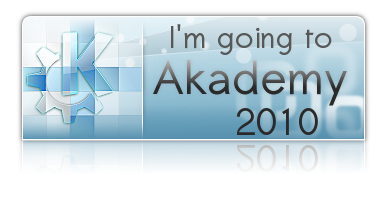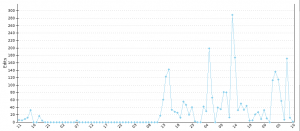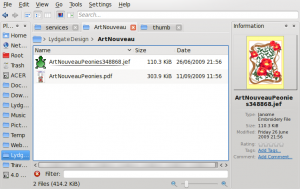The third and final part of my wanderings today concerns the development of our wikis. I told you last time that the forum team have set up a sandbox wiki for us, and a good deal of work has come out of that during that past two weeks. A special thanks is due to neverendingo, who has done so much work for us.
When we started this I had not realised that the reason our wikis are consistent in looks is because they share the same skin. Even when I first heard that, I didn’t entirely realise the consequences of this. Basically, apart from content itself, anything that is done to one of the wikis will also affect the others. The downside of this is that we really should have agreement among all the wiki maintainers before things get changed, and that really means that we need to be exchanging views far more often. #kde-www is the easiest place for this to happen. The upside,though, is huge. As long as we can get those communication channels working, it means that any and every issue we can identify and fix on our sandbox can be used to the benefit of all our wikis, giving noticeable improvements to them all for minimal effort.
One issue that we have looked at concerns the Recent Changes RSS feed, which has been broken since our Mediawiki installation was upgraded to 1.14.0. I had hoped that upgrading to 1.15 would fix it – but it doesn’t. We have 1.16alpha installed on our sandbox – the version that is due to be release in the next few weeks (and it is remarkably stable, as far as our limited use can tell) – but that doesn’t fix it either. From reading posts in the archives of the Mediawiki mailing list it seems that the decision-makes at Mediawiki don’t think it’s worth putting time and effort into fixing RSS when Atom feeds are totally reliable, and, they say, more powerful. I have been watching voth RSS and Atom feeds for both UserBase and Userbase-testing for a while now, and I have to say that the Atom feeds are great. That begs the question, though, of whether RSS feeds should be offered on our wiki pages. Because they are so well known, not to offer them might seem very strange. However, offering something that is known to be really badly broken is embarrassing.
The other issue that has been taking our time is that of developing systems to help with translations. We are getting a great deal of help from the two developers of the translation extension, which naturally feeds back to improve the extension for everyone else.
As we have talked to translators it has become clear that we are not going to get a one-size-fits-all solution, so we are looking at a two-pronged attack. The main, and intended, usage of the extension is to do it on-line. The source is marked up as translatable, and from then on changes are tracked so that the translators can see what needs updating. It’s a new way of working, so there is a small learning curve, and there are still a few wrinkles to iron out, but it’s looking very promising indeed.
For those who prefer to work with familiar tools, the extension does allow export and import of .po files. Again, there are wrinkles, but the main system is actually working now. This system is also one that would be useful for creating docbook files. There is a downside, though, to using this method for translations. What if we have more than one translator for a language, and one starts to work on it on-line but the other has downloaded it for off-line translating?
Apart from the RSS issue, I don’t think we’ve found anything so far that can’t be fixed, one way or another. If you have any involvement with our wiki sites, please do join us on #kde-www whenever you can, to be part of the development. I have high hopes that we can make a huge contribution to the wikis.



 I haven’t updated this topic since September, but I’m very excited about the progress so far. You may remember that one develope, David Boddie, had done some work, with the result that I could build .png files to visualise my patterns within Dolphin, and that we were hoping that the other developer who had shown interest, Purple-Bobby, would join us. That’s exactly what happened. David and Robert Forsyth, a.k.a.Purple-Bobby, attacked the problem from different angles, which proved to be very informative, as they could feed on each other’s ideas.
I haven’t updated this topic since September, but I’m very excited about the progress so far. You may remember that one develope, David Boddie, had done some work, with the result that I could build .png files to visualise my patterns within Dolphin, and that we were hoping that the other developer who had shown interest, Purple-Bobby, would join us. That’s exactly what happened. David and Robert Forsyth, a.k.a.Purple-Bobby, attacked the problem from different angles, which proved to be very informative, as they could feed on each other’s ideas.